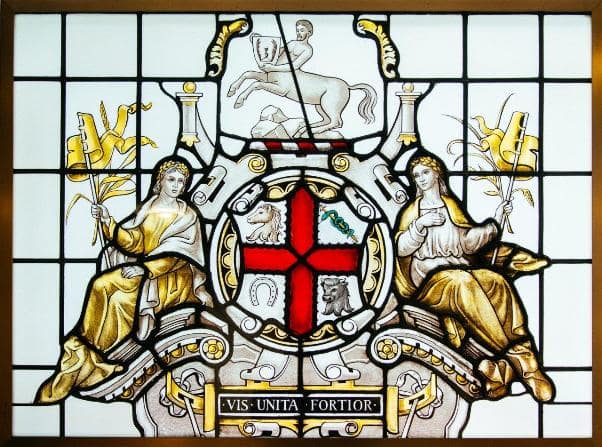Posts
 https://vethistory.rcvsknowledge.org/wp-content/uploads/2015/05/2015-05-28-09-14-39.jpg 679 566 Clare Boulton https://rcvsk-images-bucket.s3.eu-west-1.amazonaws.com/rcvsk-logos/rcvsk-logo-light-background.svg Clare Boulton2015-05-29 15:00:392023-11-14 12:02:19The RCVS stained glass
https://vethistory.rcvsknowledge.org/wp-content/uploads/2015/05/2015-05-28-09-14-39.jpg 679 566 Clare Boulton https://rcvsk-images-bucket.s3.eu-west-1.amazonaws.com/rcvsk-logos/rcvsk-logo-light-background.svg Clare Boulton2015-05-29 15:00:392023-11-14 12:02:19The RCVS stained glass
The 1881 list of ‘Existing Practitioners’
In the summer, with the help of our intern Josh, we were able…

One of the professions youngest and brightest ornaments
Recently there has been another of those coincidences that those…
 https://mlezrtjbthxp.i.optimole.com/w:auto/h:auto/q:mauto/f:best/https://vethistory.rcvsknowledge.org/wp-content/uploads/2013/06/diagram-shewing_compressed.jpg 278 448 Clare Boulton https://rcvsk-images-bucket.s3.eu-west-1.amazonaws.com/rcvsk-logos/rcvsk-logo-light-background.svg Clare Boulton2013-06-20 07:45:042024-09-10 10:50:55The artistic Mr Mayhew
https://mlezrtjbthxp.i.optimole.com/w:auto/h:auto/q:mauto/f:best/https://vethistory.rcvsknowledge.org/wp-content/uploads/2013/06/diagram-shewing_compressed.jpg 278 448 Clare Boulton https://rcvsk-images-bucket.s3.eu-west-1.amazonaws.com/rcvsk-logos/rcvsk-logo-light-background.svg Clare Boulton2013-06-20 07:45:042024-09-10 10:50:55The artistic Mr Mayhew https://mlezrtjbthxp.i.optimole.com/w:auto/h:auto/q:mauto/f:best/https://vethistory.rcvsknowledge.org/wp-content/uploads/2013/05/compressed-hughes-banquet.jpg 336 448 Clare Boulton https://rcvsk-images-bucket.s3.eu-west-1.amazonaws.com/rcvsk-logos/rcvsk-logo-light-background.svg Clare Boulton2013-05-02 15:27:032023-11-14 12:24:29Images From The Past
https://mlezrtjbthxp.i.optimole.com/w:auto/h:auto/q:mauto/f:best/https://vethistory.rcvsknowledge.org/wp-content/uploads/2013/05/compressed-hughes-banquet.jpg 336 448 Clare Boulton https://rcvsk-images-bucket.s3.eu-west-1.amazonaws.com/rcvsk-logos/rcvsk-logo-light-background.svg Clare Boulton2013-05-02 15:27:032023-11-14 12:24:29Images From The Past https://mlezrtjbthxp.i.optimole.com/w:auto/h:auto/q:mauto/f:best/https://vethistory.rcvsknowledge.org/wp-content/uploads/2013/01/frog1.jpg 336 448 Clare Boulton https://rcvsk-images-bucket.s3.eu-west-1.amazonaws.com/rcvsk-logos/rcvsk-logo-light-background.svg Clare Boulton2013-01-16 08:36:202023-12-20 15:36:07A model hoof
https://mlezrtjbthxp.i.optimole.com/w:auto/h:auto/q:mauto/f:best/https://vethistory.rcvsknowledge.org/wp-content/uploads/2013/01/frog1.jpg 336 448 Clare Boulton https://rcvsk-images-bucket.s3.eu-west-1.amazonaws.com/rcvsk-logos/rcvsk-logo-light-background.svg Clare Boulton2013-01-16 08:36:202023-12-20 15:36:07A model hoof
My lords, ladies and gentlemen…
Tonight the RCVS President will welcome to the College a group…
 https://mlezrtjbthxp.i.optimole.com/w:auto/h:auto/q:mauto/f:best/https://vethistory.rcvsknowledge.org/wp-content/uploads/2012/11/100_1782.jpg 448 277 Clare Boulton https://rcvsk-images-bucket.s3.eu-west-1.amazonaws.com/rcvsk-logos/rcvsk-logo-light-background.svg Clare Boulton2012-11-23 11:54:572023-12-20 15:49:18Changing times
https://mlezrtjbthxp.i.optimole.com/w:auto/h:auto/q:mauto/f:best/https://vethistory.rcvsknowledge.org/wp-content/uploads/2012/11/100_1782.jpg 448 277 Clare Boulton https://rcvsk-images-bucket.s3.eu-west-1.amazonaws.com/rcvsk-logos/rcvsk-logo-light-background.svg Clare Boulton2012-11-23 11:54:572023-12-20 15:49:18Changing times
Making history: UK’s first black vet
October is Black History Month so this seems an appropriate time…

Honouring our ‘professional brethren on the Continent’
Nominations are currently been sought for RCVS Honorary Fellowship…

Peeping behind the curtains: a look at our Historical Collection
Curious about what we keep behind our doors? Intrigued about…

A green monkey, a baboon and…
The story of the RCVS Museum Collection is not particularly…

13 – Letter to Frederick Smith from Fred Bullock, 13 Jun 1921
Bullock writes to answer Smith's request in his previous letter, regarding measurements of the eye socket in the skull of a horse. He also mentions issues with article names in the 'Veterinary Journal', and a recent meeting [of the Royal College of Veterinary Surgeons?] in Edinburgh...

15 – Letter to Fred Bullock from Frederick Smith, 7 Mar 1920
Smith writes about various subjects including: rewriting the chapter on the muscular system for 'Veterinary Physiology; writing a review of 'Physiology of Farm Animals' by T B Wood and F H A Marshall; Cambridge School of Agriculture; 'Discovery' journal[?]; English attitude to science; writing paper; Veterinary Surgeons Act 1881 Amendment Act 1920; existing unqualified practioners; Hobday acquiring a photograph of Gabriel Colin[?]; review of 'Veterinary History of the War in South Africa'; ...
 https://mlezrtjbthxp.i.optimole.com/w:auto/h:auto/q:mauto/f:best/https://vethistory.rcvsknowledge.org/wp-content/uploads/2024/12/feat-EVR-Vol2-No7-EE-00012.jpg 89 365 Clare Boulton https://rcvsk-images-bucket.s3.eu-west-1.amazonaws.com/rcvsk-logos/rcvsk-logo-light-background.svg Clare Boulton1860-07-31 14:28:002025-01-10 09:59:03‘Edinburgh Veterinary Review and Annals of Comparative Pathology’ Vol 2 No 7 July 1860 Editorial and Extracts
https://mlezrtjbthxp.i.optimole.com/w:auto/h:auto/q:mauto/f:best/https://vethistory.rcvsknowledge.org/wp-content/uploads/2024/12/feat-EVR-Vol2-No7-EE-00012.jpg 89 365 Clare Boulton https://rcvsk-images-bucket.s3.eu-west-1.amazonaws.com/rcvsk-logos/rcvsk-logo-light-background.svg Clare Boulton1860-07-31 14:28:002025-01-10 09:59:03‘Edinburgh Veterinary Review and Annals of Comparative Pathology’ Vol 2 No 7 July 1860 Editorial and Extracts